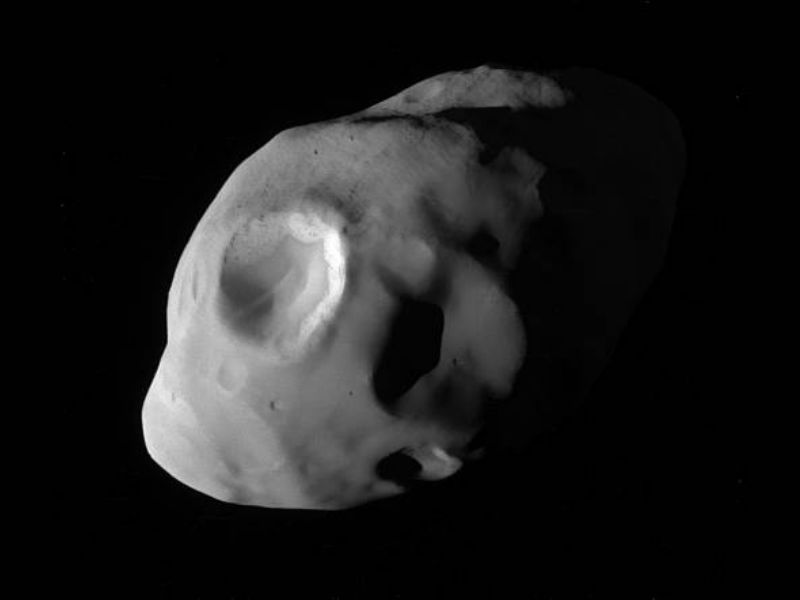
NASA’s Cassini beamed back proximal and highest-resolution snaps of Saturn’s moon Pandora
Cassini, the unmanned robotic spacecraft of NASA, which is orbiting planet Saturn since 1997, has beamed back some stunning close-up images of Pandora, the moon of Saturn. NASA, the US-based space agency has released a series of highest-resolution and close-up pictures of Saturn’s moon which are click by the high-definition camera aboard Cassini space probe circling the planet.
NASA has claimed the pictures of Saturn’s moon to be the highest resolution pictures ever caught. The photos beamed back by Cassini are giving some breath-taking and never-before-seen views of the potato-shaped moon. The pictures were clicked on 18th December 2016, while Cassini taking its closet-ever fly of Pandora. It was the third ring-grazing fly of Cassini by the external edges of the main ring of the planet. Cassini using its narrow-angle camera has snapped the eye-catching views of the Pandora, said NASA in a statement.
As said by NASA, Cassini, while taking its closest flyby to Saturn’s ring has clicked the images. During the third close flyby to Saturn, Cassini was able to capture the closest-ever views of Pandora. The image was captured in green light the onboard narrow-angle camera of Cassini at an approximate distance of 40,500 kilometers (25,200 miles) from Pandora. The scale of the transmitted images range is 787 feet (240 meters) per pixel. The narrow-angle camera of Saturn is installed on the spacecraft has clicked the snaps of Pandora from 52 miles wide (84 kilometers), said NASA.
NASA also took to Twitter to publish the image of Saturn’s Moon Pandora. With the picture, NASA also posted a tweet which reads: “Pandora, one of Saturn’s moons…up close! This @CassiniSaturn pic is one of most hi-res views ever taken of this moon http://go.nasa.gov/2hWM3ns”
To summon up, “Cassini-Huygens” is a collaborative space mission between NASA, European Space Agency (ESA) and the Italian Space Agency. Earlier this month, Cassini transmitted the closest view of the hexagon-shaped jet stream situated at the north pole of Saturn. And now, the new picture of its closest-ever ring-grazing is expected to lead the astronomers towards a more revealing approach to the most beautiful planet of our stellar system – Saturn. The mission will meet with its historic end in April 2017.


